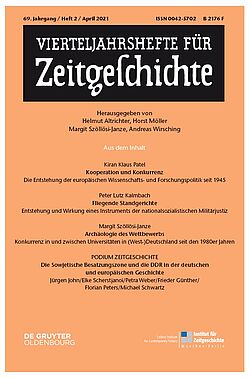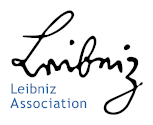- The Institute
- Research
- Dictatorships in the 20th Century
- Democracies and their Historical Self-Perceptions
- Transformations in Most Recent History
- International and Transnational Relations
- Edited Source Collections
- Dissertation Projects
- Completed Projects
- Dokumentation Obersalzberg
- Center for Holocaust Studies
- Berlin Center for Cold War Studies
- Publications
- Vierteljahrshefte
- The Archives
- Library
- Center for Holocaust Studies
- News
- Dates
- Press
- Recent Publications
- News from the Institute
- Topics
- Munich 1972
- Confronting Decline
- Feminist, Pacifist, Provocateur
- Der Mauerbau als Audiowalk
- Digital Contemporary History
- Transportation in Germany
- Envisaged Futures at the End of the Cold War
- From the Reichsbank to the Bundesbank
- German Federal Chancellery
- History of Sustainabilities: Discourses and Practices since the 1970s
- Changing Work
- Democratic Culture and the Nazi Past
- The History of the Treuhandanstalt
- Foreign Policy Documentation (AAPD)
- Dokumentation Obersalzberg
- Hitler, Mein Kampf. A Critical Edition
- "Man hört, man spricht"
- IfZ
- Vierteljahrshefte
- VfZ Archive
- Issue Index
- 2021
- Issue April 2021
Issue 2/2021
Content Overview: English Titles and Abstracts:
- Kiran Klaus Patel: Cooperation and Competition. The Emergence of European Science and Research Policies Since 1945.
- Peter Lutz Kalmbach: The Flying Court Martial. Genesis and Effect of an Instrument of National Socialist Military Justice. - Newspaper Article Die Welt
- Margit Szöllösi-Janze: The Archaeology of Competition. Competition Within and Between Universities in (West-) Germany Since the 1980s. - Lecture
- Contemporary History Podium: More than a Footnote! The Soviet Zone of Occupation and the GDR in German and European History. - Lecture
Abstracts
Kiran Klaus Patel, Cooperation and Competition. The Emergence of European Science and Research Policies Since 1945
The author investigates how the European Union (EU) was able to become the central actor in science and research policy at the European level. The initial thesis is that the predecessor organisations of the current EU were in no way predestined to achieve such a pre-eminent position when they were founded in the 1950s. Instead, the European Communities were late-comers in this area, in which other international organisations were already active – parallel to local, national and global actors. Against this background, the article describes the key steps of the EU’s rise to prominence and analyses stages and reasons for the EU’s increased importance in this policy field.
Peter Lutz Kalmbach, The Flying Court Martial. Genesis and Effect of an Instrument of National Socialist Military Justice
The Flying Court Martial – this term stands for killings, deterrence, but also for suggestion and thereby represents the terrorist chaos of the final phase of the Third Reich. Thousands were killed by this retributive form of justice of the National Socialists into May 1945. The author doesn’t merely make do with indicating the relating research literature on SS Commandos or the Standgerichtsverordnung (Court Martial Ordinance) of the Reich Ministry of Justice of February 1945. In order to understand the genesis of this instrument of justice, it is necessary to study a longer period than just that of 1944/45. For this reason the author outlines the environment between 1933 and 1943, identifies central actors and refers to legal developments especially of the 19th and early 20th century.
Margit Szöllösi-Janze, The Archaeology of Competition. Competition Within and Between Universities in (West-) Germany Since the 1980s
The implementation of the principle of competition between and within German universities is suitable as an analytical probe in order to trace the radical change of the higher education system. In view of the problems in research governance given tight budgets and a new, neoliberal economic, political and thinking style since the late 1970s, competition became a broad socially acceptable modus operandi which was able to disencumber politics and administration. The introduction of competitive instruments such as New Public Management installed a market-like, hierarchical governance regime in the universities. The unleashing of competition reveals itself as a subtle control mechanism, which obscures its changeable parameters and opens universities up to increased inner and outer control.
Contemporary History Podium: More than a Footnote! The Soviet Zone of Occupation and the GDR in German and European History
Researching the history of the German Democratic Republic (GDR) is necessary to better understand current issues such as the tensions presently perceptible in Eastern Germany, which are at least partially rooted in the years between 1945 and 1990. Additionally there is the still ongoing historiographical problem of which new questions need to be asked about the GDR as part of German and European history. The authors of the “Contemporary History Podium” first discuss the history of the Soviet Zone of Occupation (Jürgen John) and the early GDR (Elke Scherstjanoi). Petra Weber subsequently deals with the social history of the GDR in an intra-German context, Frieder Günther makes observations about research into government agencies in East-West comparison, and Florian Peters searches for the historic place of the GDR in the history of Eastern Europe. Finally Michael Schwartz considers the historical role of the GDR in transformations since the 1980s.









